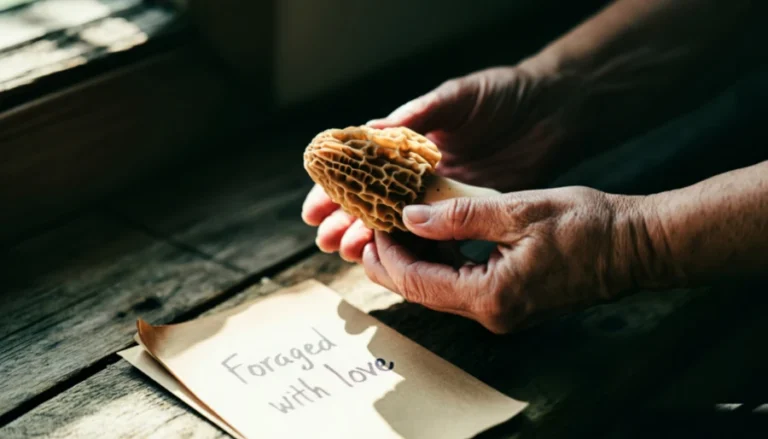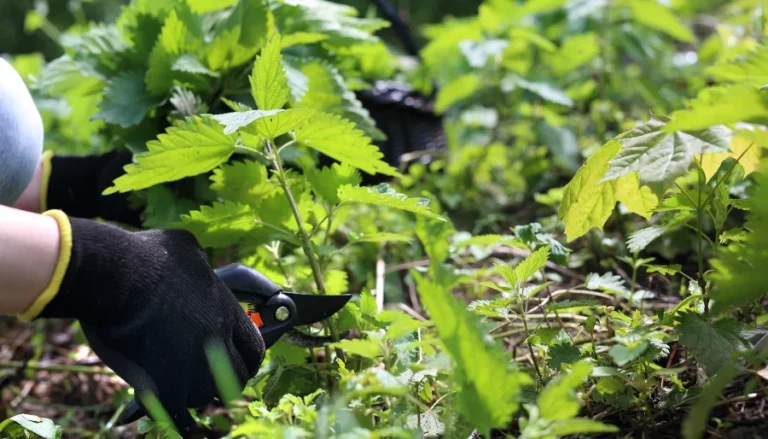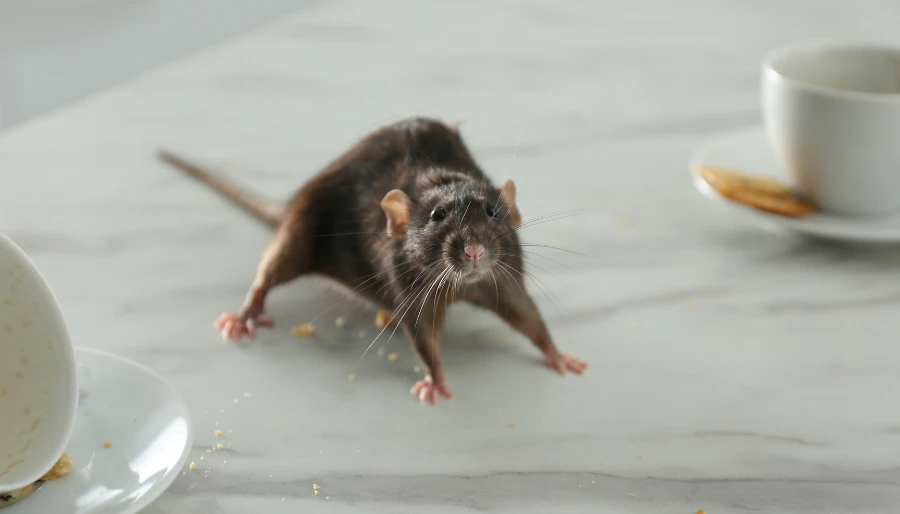If you enjoy watching the wild birds frolicking happily in your backyard every day, and would like to turn your backyard into a bird paradise, so you can see them thrive all year long, here are 5 ways you can do just that!
You can give your wild feathered friends a place where they can thrive whether it’s winter, spring, summer or fall.
And, I’ve even included a few recipes for homemade treats you can make below.
Provide Them With Shelter
There are a couple of ways you can provide shelter for wild birds, by planting trees, shrubs and bushes and installing bird houses.
Trees, shrubs and bushes provide protection from weather, a place to roost and nest, escape predators as well as a source of food. Planting a variety of all three will help ensure that several species will find the shelter they prefer.
Birdhouses are also a welcome addition as shelters, especially during the breeding season, to provide a safe place to nest and raise their chicks, to find the type of bird houses that will work best for your yard, watch the varieties of birds that visit your yard every day and look online for the type of house they prefer to use.
You can choose to build your own birdhouses (you can find several designs for different birdhouses online), or you can purchase them from a garden center or online.
You can also add these shelters to your front yard as well, the more shelter available, the more birds you will help and with the increase in the number of buildings and parking lots in the world, finding shelter is becoming more and more difficult, so our wild feathered friends can use all the help they can get.
An important thing to remember is not to use any pesticides, herbicides or fungicides in your yards as these will harm the birds and other wildlife. Instead, choose products that are made of natural ingredients that are safe for use around animals.
Help Keep Them Fed
Wild birds can have difficulties finding food in nature as more of their natural habitat is removed, so you can help by putting up some bird feeders in your backyard and front yard to give them an additional source of food.
The food they need will vary according to the type of birds that live in your region and the time of year.
Using a wild bird seed mix made for all species is a good base feed, you can add other foods to the mix to make it even more nutrient rich, a list is given below to give you some ideas on what to add for different seasons.

If you’re in an area that has hummingbirds, you will want to add a hummingbird feeder with nectar to help these amazing little birds thrive, be sure to place the hummingbird feeders near trees, in the shade and away from windows to provide the birds a safe place to feed.
Please don’t buy the nectar with the red dye as this can be harmful to the birds, it’s easy to make homemade nectar, and it’s cheaper than buying the premade stuff. A recipe is provided below.
When installing your feeders, be sure to place them near trees or bushes to give the birds an easy-to-reach escape from predators and at least 5-feet from the ground to keep them out of reach of cats.
It’s also a good idea to place bird silhouette clings to windows as well to help the birds see the window and prevent them from flying into them.
Squirrels can pose a problem when it comes to bird feeders, you can install a squirrel baffle or other squirrel deterrent (even Vaseline spread on the pole will help) on any feeder poles to help protect your feeders from these pesky little thieves, you can find some DYI ideas, or purchase these online or in garden centers.
Even though you want the feeders near trees as an escape from predators, but you don’t want them too close to make it harder for any squirrels from jumping to them.
Be sure to clean your feeders regularly to help reduce bacteria growth and spread of disease. Use a vinegar and water solution to clean your feeders. It’s quick to mix up!
A solution of 9 parts water to 1 part white vinegar, can effortlessly scrub off any droppings. Just let it dry before refilling.
Seeing all the birds happily gathering around your feeders is a very rewarding sight, knowing they have the nutrition they need to survive through any season.
Help Keep Them Hydrated

A source of water is very important for the survival of wild birds, well, water is critical to all living things!
But birds need it for hydration as well as bathing, which helps keep their skin and feathers healthy. Installing a bird bath or two in your yard is the best way to provide a clean source of water.
Place the bird bath in a shaded area if possible, this will help reduce algae growth, and also try to place in an area within reach of a hose to make filling and cleaning the bath easier.
The water should be changed and filled daily if possible or at least every other day to help prevent bacteria and algae growth as well as reducing the spread of diseases.
To clean your bird bath, dump all the old water and debris out of the bath, and add the solution from above (9 cups of water to 1 cup of white vinegar) to the bath and scrub using a stiff bristled brush, then rinse thoroughly and refill.
Avoid using soaps and chemicals in your bird baths to prevent any residues being left behind which could cause illness in the birds.
During the winter months to keep the water in the bird bath from freezing you can purchase a heater that is designed for outdoor use in bird baths, you can find these in garden centers or online.
It’s fun to watch birds splashing around in a fresh bird bath, a fresh clean, well hydrated bird is a happy bird.
Plant Their Natural Food Sources

When you are planning your flower garden and landscaping, adding some flowers and grasses that will go to seed will provide a food source for many species of wild birds.
Aside from adding beauty, flowers like sunflowers, flax, black eyed susans, daisies, marigolds and cosmos, and ornamental grasses like switchgrass, blue fescue, little blue stem, Canada wild rye and many others will provide a great source of seed for wild birds.
Protect Wild Birds From Your Own Pets
It’s natural for dogs and cats to chase and hunt birds.
If you have a dog or cat, you’ll want to make sure that you limit their interaction with the wild birds visiting your birdie sanctuary. After all, while it’s natural for your pets to chase and even kill birds, you feed them well, they don’t need the extra protein!
Watching the times that your yard is most active with birds (usually early morning and late afternoon) you can be sure to let your pets out before and after the most active times.
It may be a little inconvenient, but when you are inviting the wild birds into your birdie sanctuary, it’s your responsibility to make sure that you keep them safe, the birds already have plenty of natural predators to contend with.
Minimize Pesticide Use
To create a safe environment for birds, minimize or eliminate the use of pesticides in your yard. Pesticides can be harmful to birds and their food sources. Instead, opt for organic and natural methods of pest control or embrace natural pest predators like ladybugs or birds themselves.
Natural Pest Repellent Spray Recipe
Ingredients:
- 1 cup water
- 1 teaspoon dish soap
- 10 drops peppermint essential oil
- 10 drops eucalyptus essential oil
Instructions:
- In a spray bottle, combine water, dish soap, peppermint essential oil, and eucalyptus essential oil.
- Shake well to mix the ingredients.
- Spray the mixture on plants and areas where pests are present.
- Reapply as needed, especially after rainfall.
Foods To Offer Wild Birds For Every Season
- Spring – Wild bird seed mix, safflower seed, black oiler sunflower seeds, raisins, currants and chopped dried fruits and nuts, mealworms and suet.
- Summer – Wild bird seed mix, safflower seed, black oiler sunflower seeds, raisins, currants and chopped dried fruits, chopped nuts and mealworms.
- Fall – Wild bird seed mix, Niger seed, safflower seed, black oiler sunflower seeds, raisins, currants and chopped dried fruits and nuts, mealworms and suet.
- Winter – Wild bird seed mix, Niger seed, safflower seed, black oiler sunflower seeds, raisins, currants and chopped dried fruits and nuts, mealworms and suet.
6 Wild Bird Treat Recipes For Any Season
Homemade Hummingbird Nectar
Ingredients
- 1 cup white sugar (granulated)
- 4 cups water
Directions
- Place the ingredients in a large bowl and stir until the sugar is completely dissolved.
- Pour into your hummingbird feeders and hang in a shaded area near trees if possible.
- Unused nectar can be stored in the refrigerator for up to a week, be sure to discard any unused nectar after one week or sooner if you notice any mold growing.
Homemade Suet Cakes

Ingredients
- 1 cup all natural peanut (can use crunchy) or almond butter (only use nut butters containing nuts only)
- 1 cup Lard (DO NOT use Crisco or vegetable shortening, use only animal fat lard)
- 2 cups Quick oats
- 2 cups Wild bird seed (you can also add chopped dried fruits, raisins and raw nuts)
- 1 cup Yellow cornmeal
- 1 cup Whole wheat flour
Directions
- Place the peanut or almond butter and lard into a sauce pan and melt over low heat.
- In a large bowl, place all the dry ingredients and mix well to combine.
- Stir in the melted peanut or almond butter and lard into the dry ingredients and stir until thoroughly combined.
- Place the mixture into a 1-inch deep square mold and press firmly as you add until the mold is full and compacted.
- Refrigerate until solid.
- Place into a suet cake holder and hang.
- You can store the suet cakes in the fridge until use or in the freezer for longer storage.
* Note: hanging suet when it’s frozen will help slow down the melting when it’s warm outside.
Air Popped Popcorn Bird Balls

Ingredients
- 6–7 cups Air popped popcorn (use only air popped)
- 4 teaspoons all-natural peanut or almond butter (use nut butters only made with the no salt, sugar or other ingredients added)
- 1 cup Bird seed (any kind)
- 1/4 cup Chopped dried fruits, raisins or nuts
Directions
- Pop the popcorn.
- Melt the peanut or almond butter in a sauce pan on low heat.
- Place popcorn into a large mixing bowl and stir in melted nut butter and stir until popcorn is coated.
- Then slowly add the dried fruits, raisins or nuts and mix until well combined.
- Gather some of the popcorn mix and place a piece of twine leaving a long piece on the outside for hanging and cover the twine in the with more mix and shape into a ball. Try to make sure the twine remains in the center of the ball to make it easier to hang.
- Refrigerate on parchment lined baking sheet until firm, then hang outside on branches.
- Store unused popcorn ball in the fridge.
Nut Butter Seed Disks

Supplies
- Twine
- Wide mouth mason jar lids
- Popsicle stick
Ingredients
- 1 cup All natural peanut or almond butter (use nut butters only made with the nuts, no salt, sugar or other ingredients added)
- 1 1/2 cups Wild bird seed
- 1/2 cup Black oiler sunflower seed or safflower seed
- Optional: You can also add a handful of raisins or other chopped dried fruit
Directions
- Melt the peanut or almond butter over a low heat in a sauce pan, this will make it easier to mix into the seeds.
- Place seeds in a large bowl and add the melted nut butter and stir until the seeds are thoroughly coated.
- Place the mason jar lids on a parchment paper lined baking sheet and add some of the seed/nut butter mix into each ring and compact it tightly until full, then using the popsicle stick make a hole towards the top of each disc (be sure to not place the hole too close to the edge).
- Now, place the tray in the freezer for 3 hours or until solid.
- Remove the discs from the jar rings and thread a piece of twine through, so the disc can be hung on a branch.
- You can store the discs in a freezer bag separated with parchment paper in the freezer until needed.
Pine Cone Seed Treats

Ingredients
- All natural peanut or almond butter (no salt, sugar or other ingredients added)
- Pine cones
- Wild bird seed
Directions
You will need pine cones (be sure to only use natural, untreated or scented cones) and twine to make these.
The pine cones can be any size or shape, but they should be opened up enough to allow the nut butter and seeds to stick.
- Clean the pine cones by brushing off any dirt or debris using a soft brush, then tie a piece of twine about 3 leaves down on each cone to be the hanger.
- Line a baking sheet with parchment paper, then spread peanut or almond butter onto each pine cone and cover each cone completely.
- Place a good amount of bird seed into a large bowl and place a cone one at a time into the bird seed and roll the cone around to coat with the seeds, be sure to press the seeds into the nut butter.
- Place the cones on the parchment paper lined baking dish and place in the freezer for 1 hour to allow them to firm up.
Note: The cones don’t need to be thawed before hanging, and any unused cone treats can be stored in a freezer bag in the freezer until needed.
Hang the cones on a ranch that has a branch under the feeder to make it easier for the birds to reach them.
More To Discover
- Growing a Flower Garden to Attract Wild Birds to Your Backyard
- The Ultimate DIY Chicken Dust Bath: Real Recipes Included
- Scientists Just Created A Battery Powered By Hemoglobin: The Sustainability Is Bloody Impressive
- 1.5 Billion Tires Are Thrown Away Annually, A New Recycling Method Can Transform Them Into High-Value Products
Bird Seed Energy Balls

Ingredients
- 1 cup birdseed mix (containing a variety of seeds)
- 1/2 cup peanut butter or suet
- 1/4 cup cornmeal
- 1/4 cup dried fruits, chopped (raisins, cranberries, or chopped dried apricots)
Directions
- In a mixing bowl, combine birdseed mix, peanut butter (or suet), cornmeal, and dried fruits.
- Mix thoroughly until well combined.
- Roll the mixture into small balls, about the size of a golf ball.
- Place the energy balls on a tray and refrigerate for at least 1 hour to set.
- Hang the energy balls in mesh bags or place them on bird feeders for the birds to enjoy.




















